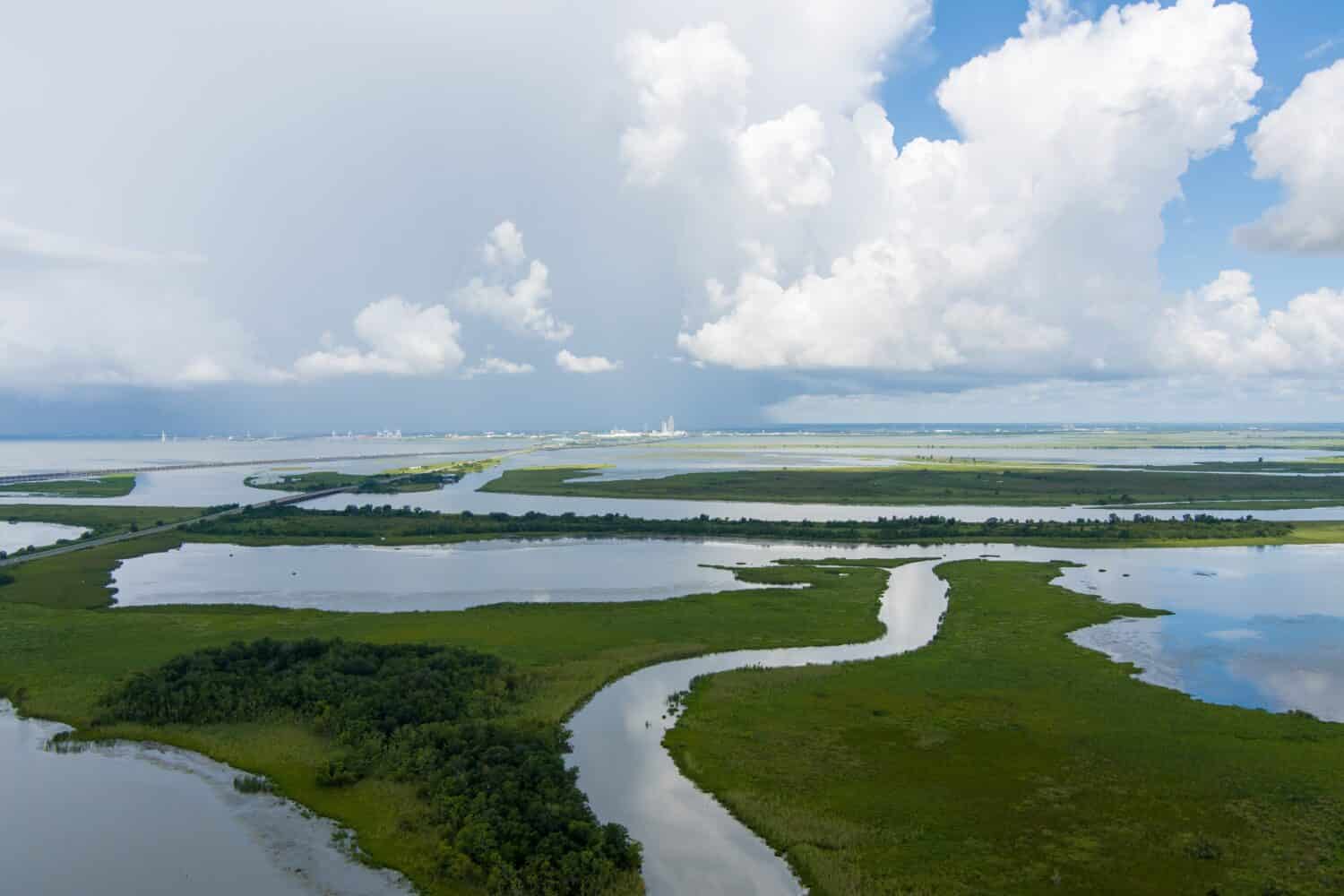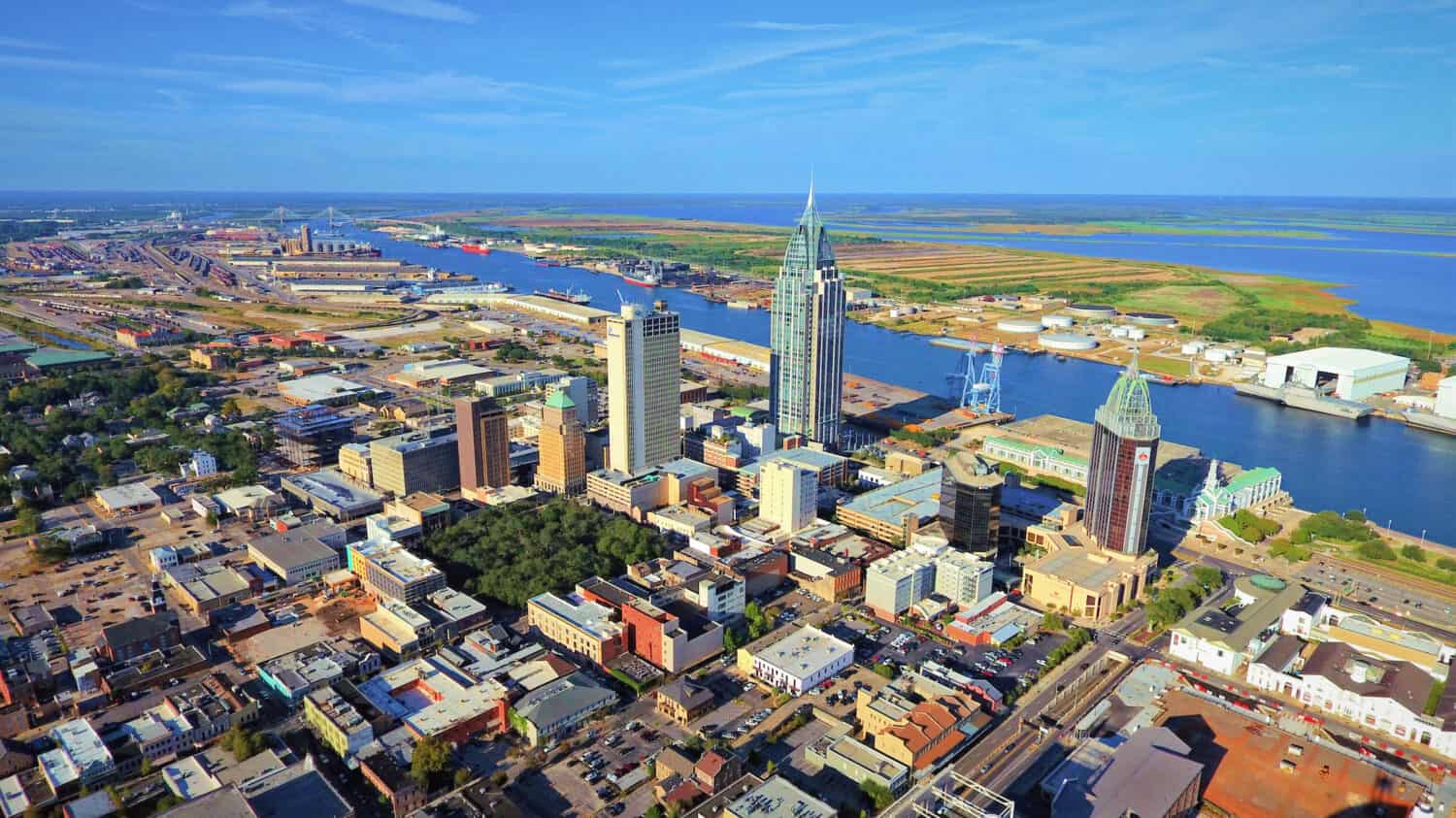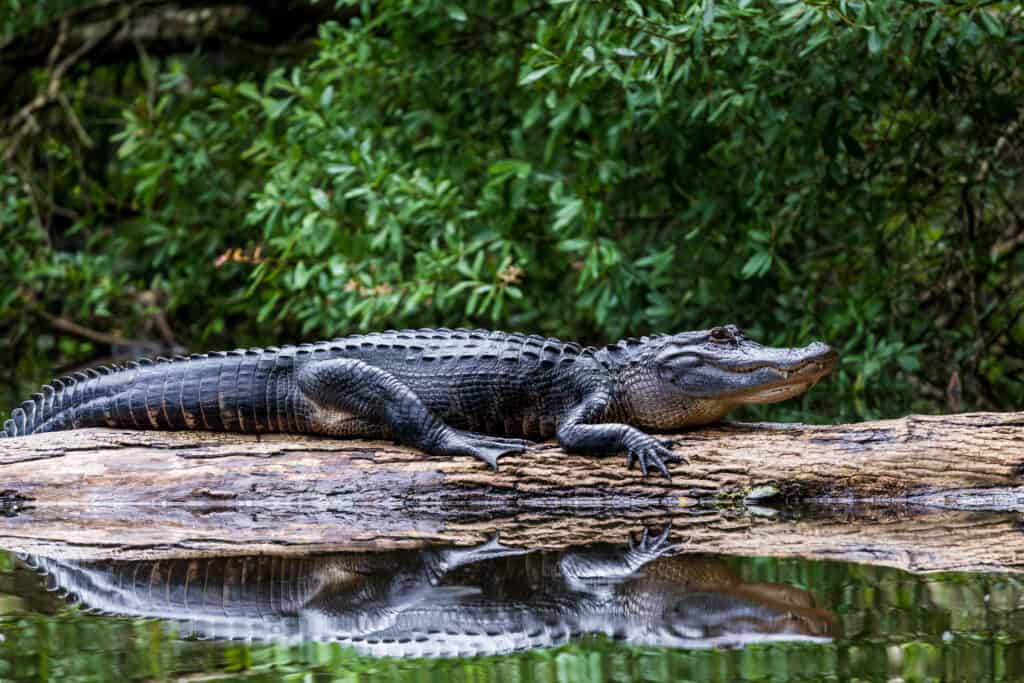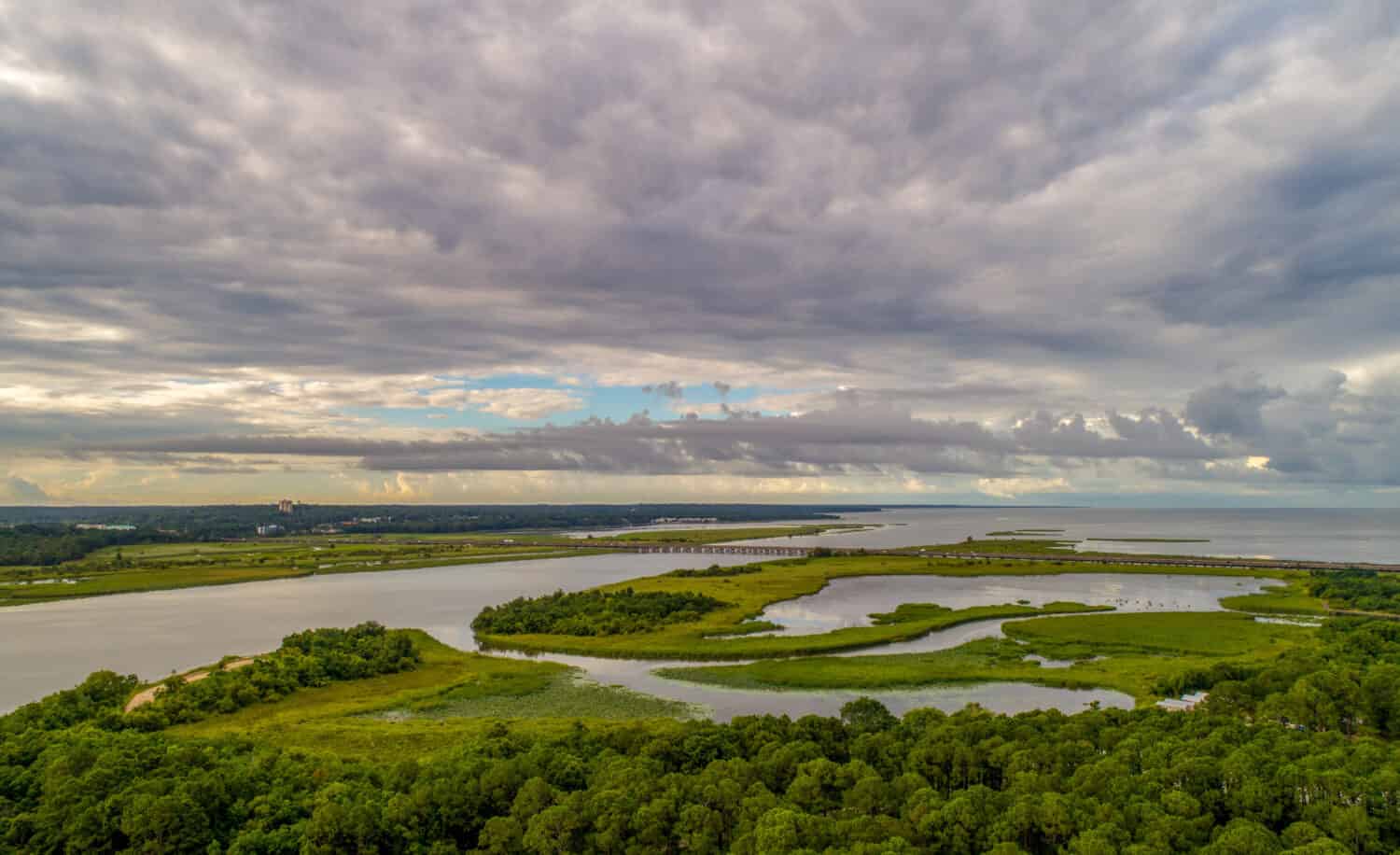The Mobile River flows 45 miles through Southern Alabama. It is formed by the confluence of the Alabama and Tombigbee Rivers, 50 miles northeast of Mobile, AL. The Mobile River drains a 44,000-square-mile area. Its watershed includes land in Alabama, Mississippi, Georgia, and Tennessee. As the Mobile River approaches Mobile Bay, it flows through the Mobile-Tensaw River Delta. At the end of its course, the river empties into Mobile Bay, which is on the Gulf of Mexico. This river has historically been the principal way to navigate Alabama by ship. So, how deep is the Mobile River?
A river’s depth naturally varies along its course. The Mobile River is between 7 and 39 feet deep near its mouth at Mobile Bay. This article explores the history of Mobile, animals in the Mobile River, and activities.

The Mobile River becomes the Mobile-Tensaw River Delta delta near the city of Mobile, AL.
©George Dodd III/Shutterstock.com
The Founding of Mobile
Mobile is the county seat of Mobile County, AL. It is Alabama’s fourth-most-populous city, with a population of 187,041. Mobile is located where the Mobile River meets Mobile Bay. The Port of Mobile is Alabama’s only saltwater port. It is the 12th-largest port in the United States.

Mobile is one of the largest cities in Alabama and has the state’s only saltwater port.
©George Dodd III/Shutterstock.com
The area now known as Mobile was once home to the Chato people, a tribe from southern Alabama and Mississippi. There is very little written history about the Chato, and they are no longer a tribe today. The existing documentation suggests that the Chato people were colonized by the Spanish, as well as enslaved by the Spanish and neighboring tribes. Once the area was taken over by Great Britain, the Chato and neighboring tribes migrated west. The tribe was seen a few times as they migrated along the coast until eventually, they were never seen again by colonists.
How Mobile Became a United States City
Mobile was first a colony of France, Great Britain, and Spain before becoming a part of the United States in 1813. Mobile was founded by French colonists in 1702. It was the first capital of French Louisiana at the time. Then, the capital was moved to Biloxi in 1720. At the end of the Seven Years’ War, in 1763, France signed the Treaty of Paris and ceded Louisiana to Great Britain. Great Britain incorporated it into their West Florida colony. In 1780, Spain captured West Florida from Great Britain. Mobile remained a Spanish colony until President James Madison annexed West Florida from Spain in 1913. When Alabama was granted statehood in 1819, the population of Mobile was 809. Its population quickly increased as a result of the cotton industry and slave trade. The population was 29,258 in 1860.
Ecology of the Mobile River
The Mobile River is home to an impressive diversity of freshwater snail species, including many endemic species. However, habitat loss has significantly reduced the populations of these snails in the Mobile River. Six endemic species of freshwater snail (cylindrical lioplax, flat pebblesnail, plicate rocksnail, painted rocksnail, round rocksnail, and lacy elimia) face severe habitat loss. These species no longer exist in 90 percent of their historic range. Some factors that lead to river habitat loss are dredging, mining, channelization, and impounding. The ecology of the Mobile River is also under threat from a leaking coal ash pond at a nearby power plant.
More than 50,000 American alligators live in the Mobile-Tensaw River Delta. Many other aquatic species also live in the Mobile River such as crayfish, mussels, and eight species of snake. The river is also home to many fish species including largemouth bass, spotted bass, redfish, flounder, and bream.

American alligators were an endangered species from 1973 to 1987.
©iStock.com/Joe Pearl Photography
What to Do on the Mobile River?
There are many recreation opportunities on the Mobile River. A person visiting the city of Mobile can easily access the Mobile River and the Mobile-Tensaw River Delta. The Mobile River and Mobile-Tensaw River Delta are used for fishing, boating, and camping. Alligator hunting is also popular on the river.
Mobile has a rich culture influenced by its mixed heritage. There are many ways to enjoy a visit to Mobile. This city is the birthplace of the U.S. Mardi Gras festival, a celebration that has been held since it was a French colony in the 18th century. Mobile also has an annual Carnival celebration.

The Mobile-Tensaw River Delta is a popular place to fish and see American alligators.
©George Dodd III/Shutterstock.com
Where is the Mobile River Located on a Map?
The mouth of the Mobile River is located in Mobile, AL. Mobile is in Southern Alabama, on Mobile Bay.
The photo featured at the top of this post is © George Dodd III/Shutterstock.com
Thank you for reading! Have some feedback for us? Contact the AZ Animals editorial team.






